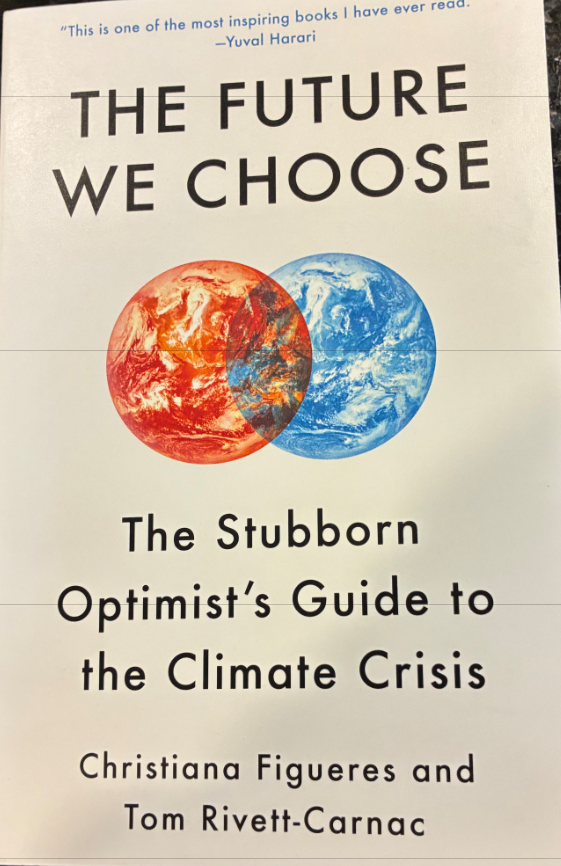Commentary
Clothes & Climate Conundrum

Editor’s note: This is one in a continuing series of educational columns about fostering environmental stewardship and leadership coordinated by ACES — The Alliance of Climate and Environmental Stewards.
The Boston Globe ran an important series of articles during the week of Thanksgiving focused on the theme of ‘fast fashion’. Written by Kimberly Atkins Stohr, it explored both the climate and the social impacts of the clothing and retail industry. The issue caught the attention of many local environmentalists and is now being highlighted as a way to help the environment.
So, what is fast fashion?
Fast fashion is a design, manufacturing, and marketing method focused on rapidly producing high volumes of clothing. (The Good Trade: https://www.thegoodtrade.com/features/what-isfast-fashion/). If you are unaware of the term, you may be surprised to learn more. By producing low quality, knock-off versions of runway designs, the fast fashion industry exploits workers in low wage countries, often leaving environmental degradation in its wake with dyes spilling into waterways. One startling data point shared in the Globe series was the fact that over one hundred years of clothing fiber can be found in landfills and even in our closets. Used clothing is one of the principal sources of waste worldwide. And as the story goes, we can do better. These cheaply made, trendy pieces have resulted in an industry business model dependent on huge amounts of consumption driven by heavy advertising. The harmful impacts of this practice affect the environment, garment workers, animals, and ultimately, consumers’ wallets.
Here’s one statistic that might surprise you: the carbon footprint of one new cotton t-shirt is about 15 pounds of greenhouse gas emissions. This includes growing cotton using fossil fuels, shipping it to be spun into fibers, then shipping to another factory, likely in another country, to be woven into cloth. The cloth is then shipped to be made into shirts, then dyed, then shipped again over the Pacific Ocean to the West Coast where it is offloaded and shipped one last time via diesel power trucks to local the local East Coast.
If you want to be stylish without harming the environment, here are three tactics to consider: First, ‘shop your closet’. You know there is a lot in there you probably haven’t worn for a while, so why not dig it out, try it on, and if it still fits, get creative to up-style it? Maybe mix and match with other items you already have or buy something new to create a fresh new look to what you already own.
Second, swap with friends and neighbors by offering clothes you won’t be wearing and ask if they might have anything that can help you refresh your style without buying something new. And third, go ‘thrifting’ with friends. According to the fashion blog, "Minimize My Mess" (https://www.minimizemymess.com) “Thrifting generally means buying affordable and unique secondhand items that have been donated to thrift stores. However, thrifting is also sometimes used as a blanket term for buying preowned items - whether from thrift stores, online, at consignment stores, flea markets, vintages stores, garage sales, estate sales, etc. It is a popular way to reduce waste and promote sustainability by giving new life to pre-owned items, as an alternative to them ending up in the landfill.”
How can you start? Check out your local thrift, consignment, and secondhand stores in our area. Bring a friend along. It’s not about being cheap, even though it does save you money. It’s about being a fashionable yet environmentally attuned human. If you’d like, send ACES a picture of your new finds at acesnewburyport@gmail.com and they may even publish it in their newsletter! And if you’d like to participate in the City’s or ACES’ waste reduction efforts, we’re always here to listen and help!
Molly Ettenborough is the manager of Newburyport’s Recycling, Energy and Sustainability Office and can be reached at mettenborough@cityofnewburyport.com Our Youth Corps asks that if you care about issues like these and would like to learn more and possibly do a bit more or have any questions, please send an email to acesnewburyport@gmail.com. To learn more about ACES and its Initiatives, visit https://www.aces-alliance.org.
.svg)




